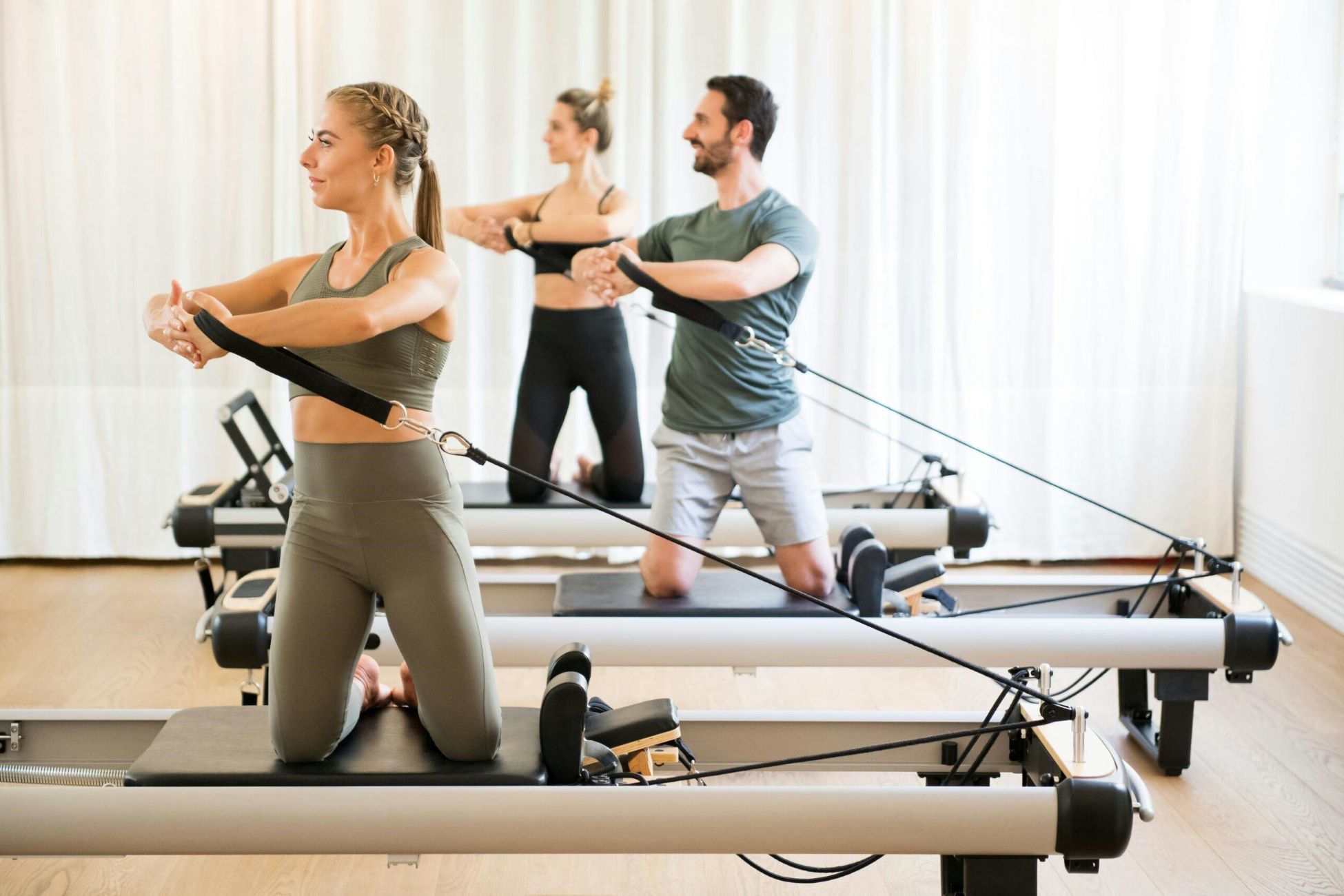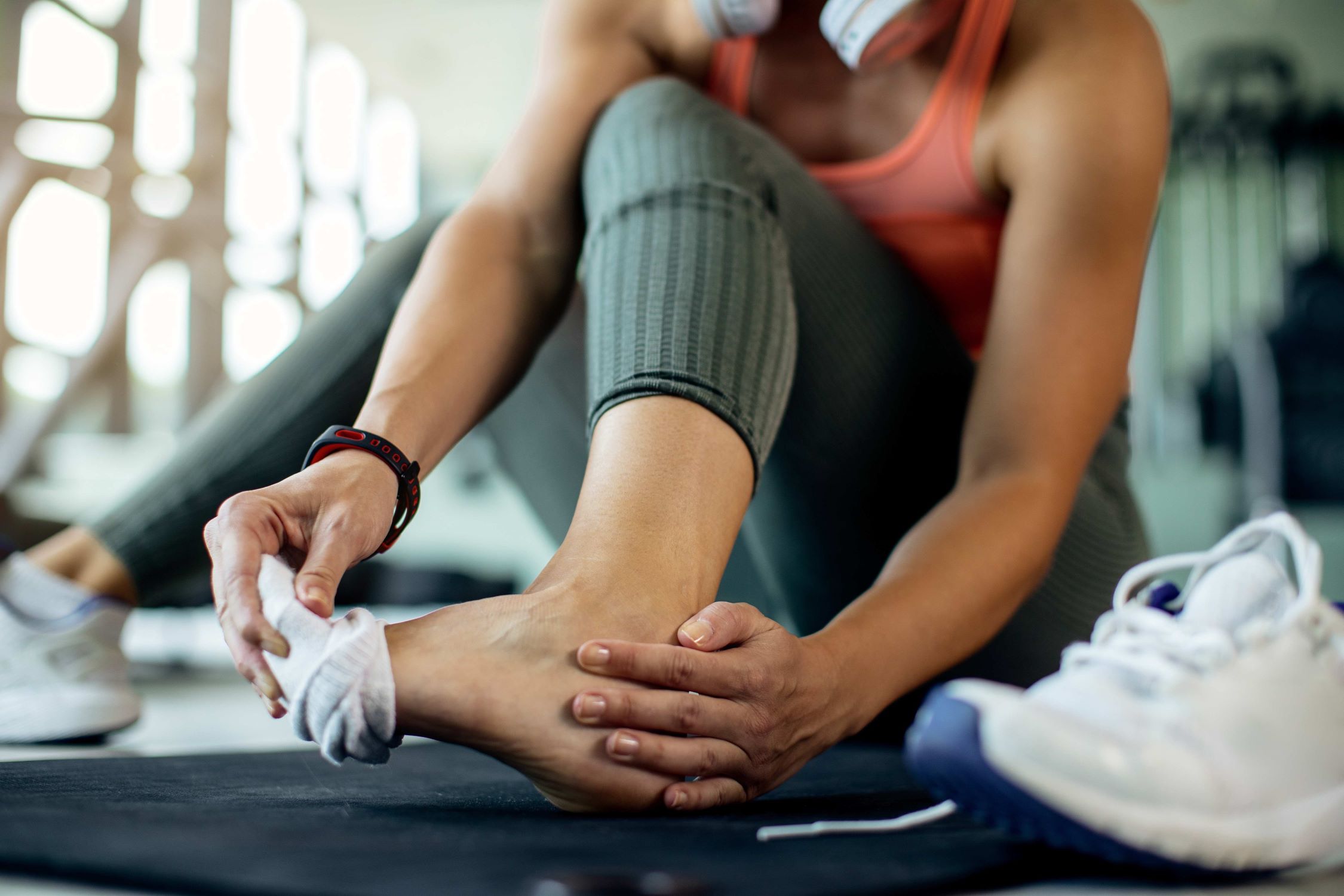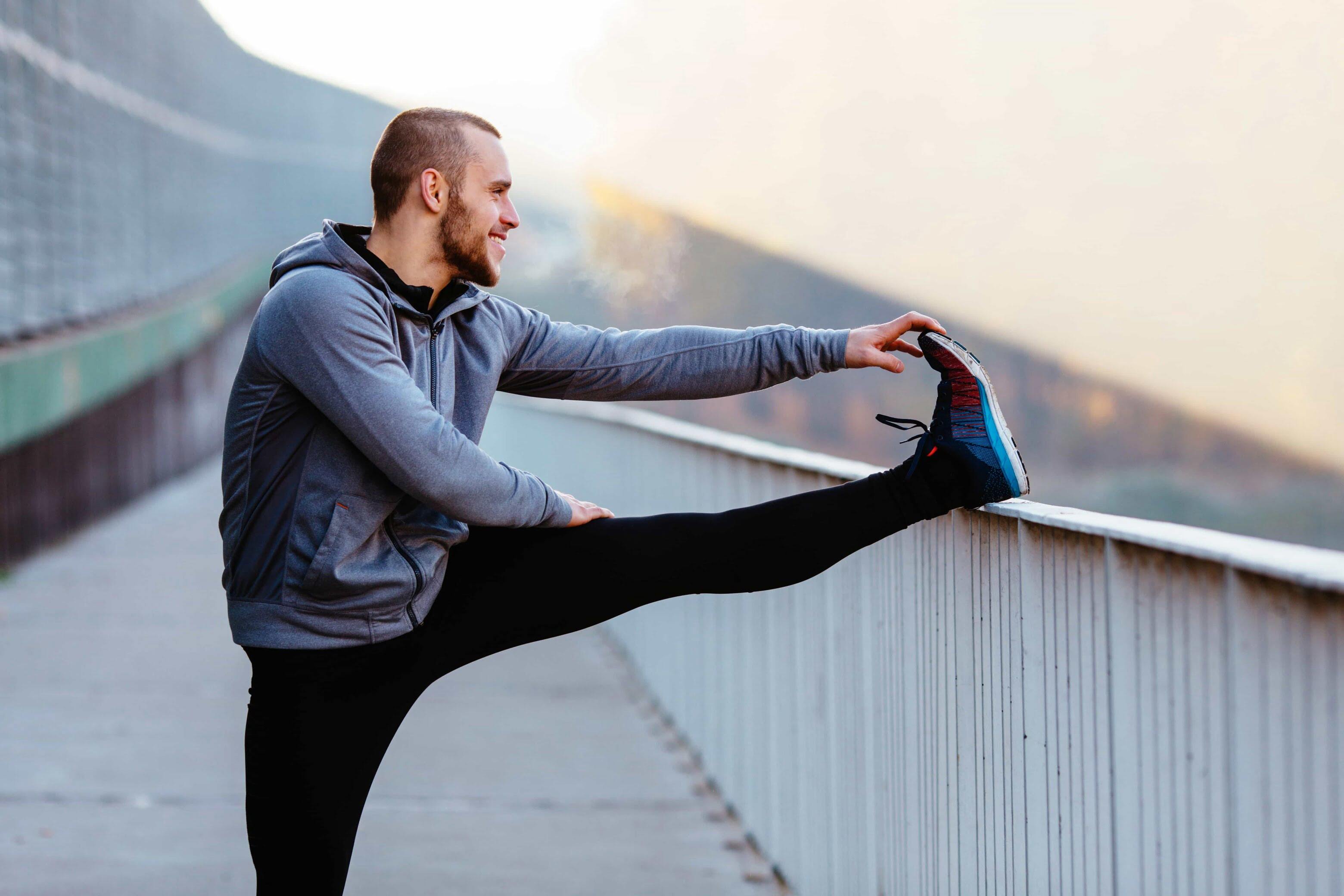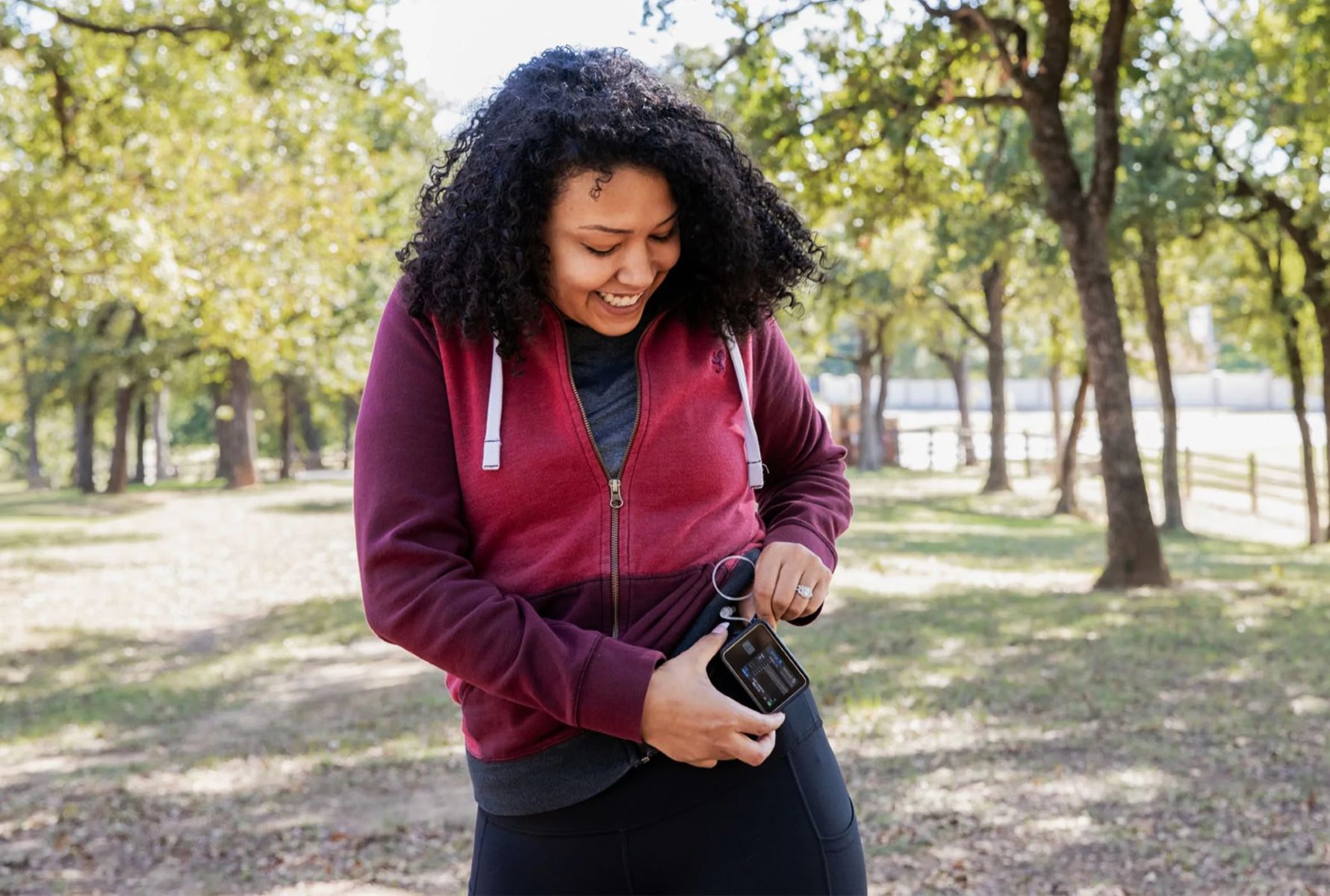Home>Health & Nutrition>Experience The VO2-max Test For Yourself
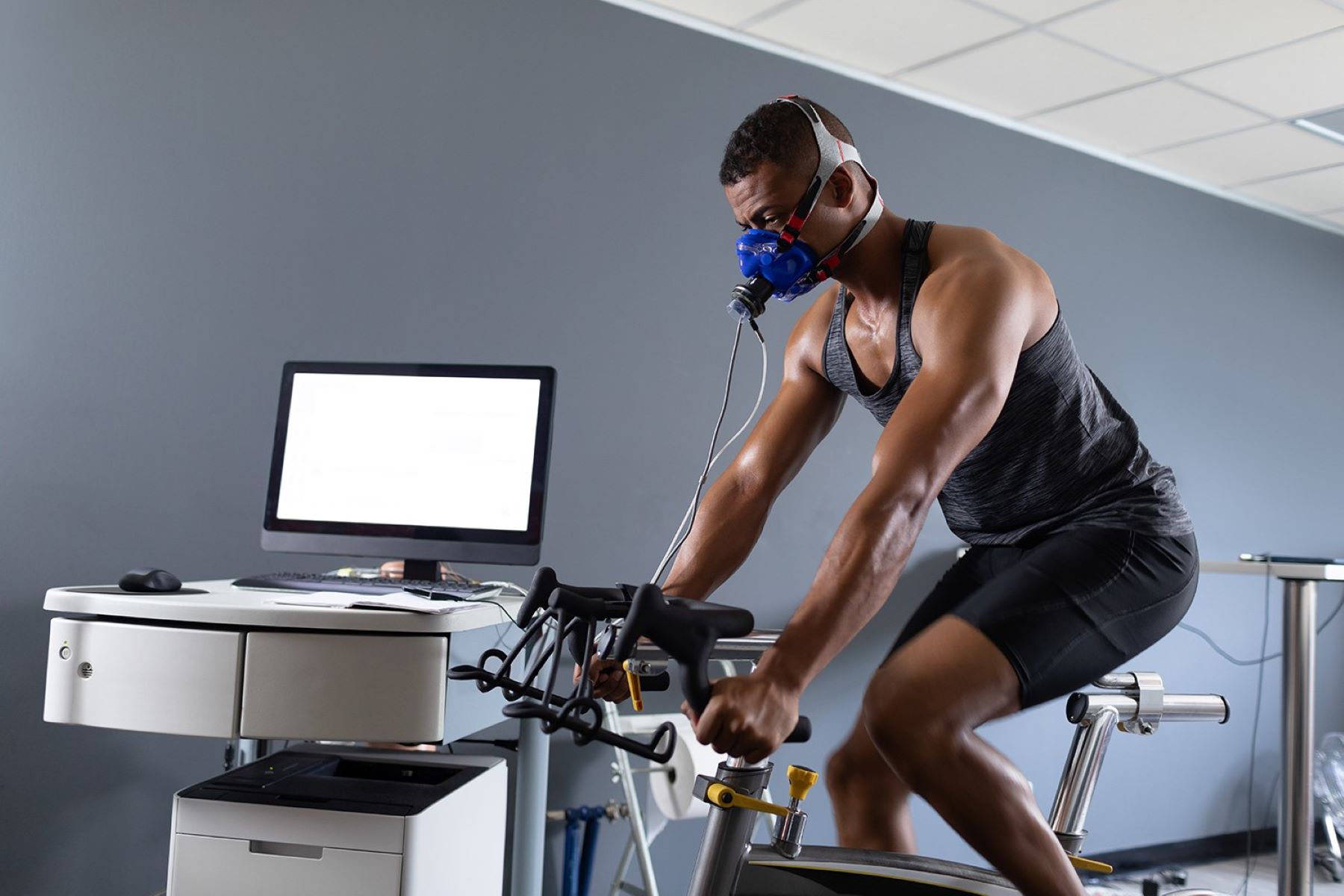

Health & Nutrition
Experience The VO2-max Test For Yourself
Published: February 25, 2024
Experience the VO2-max test and optimize your health and nutrition with our expert guidance. Discover your true potential today.
(Many of the links in this article redirect to a specific reviewed product. Your purchase of these products through affiliate links helps to generate commission for Therunningadvisor.com, at no extra cost. Learn more)
Table of Contents
What is VO2-max?
VO2-max, also known as maximal oxygen uptake, is a measure of the body's ability to utilize oxygen during intense exercise. It represents the maximum amount of oxygen that an individual can utilize during intense physical activity. This measurement is a key indicator of an individual's cardiovascular fitness and aerobic endurance.
During exercise, the body's demand for oxygen increases to meet the energy requirements of the muscles. VO2-max reflects the maximum rate at which the body can transport oxygen from the air to the muscles and utilize it for energy production. It is often expressed as milliliters of oxygen per kilogram of body weight per minute (ml/kg/min).
VO2-max is influenced by various factors, including genetics, age, gender, and fitness level. Individuals with higher VO2-max values typically demonstrate superior cardiovascular fitness and endurance, enabling them to sustain prolonged periods of strenuous physical activity.
This physiological parameter is widely used in the fields of sports science, exercise physiology, and physical fitness assessment. It serves as a valuable tool for evaluating an individual's aerobic capacity and designing personalized training programs to enhance overall fitness and performance.
Understanding VO2-max is crucial for athletes, fitness enthusiasts, and individuals seeking to optimize their exercise routines. By assessing and improving VO2-max, individuals can enhance their cardiovascular health, endurance, and overall physical performance.
Read more: Does Weight Affect VO2-max?
The importance of VO2-max in fitness
VO2-max plays a pivotal role in determining an individual's cardiovascular fitness and endurance capacity. It serves as a crucial metric for assessing overall physical performance and is particularly significant in the realm of fitness and athletic training.
A high VO2-max signifies an efficient cardiovascular system, enabling the body to deliver oxygen to the muscles at an accelerated rate during intense physical activity. This enhanced oxygen utilization capacity allows individuals to sustain prolonged periods of exercise, contributing to improved endurance and performance in various fitness pursuits.
Furthermore, VO2-max serves as a reliable indicator of an individual's aerobic fitness level. By measuring the maximum amount of oxygen that the body can utilize during exercise, VO2-max provides valuable insights into an individual's cardiovascular health and overall physical conditioning. This information is instrumental in tailoring exercise regimens to optimize fitness outcomes and enhance endurance capabilities.
In the context of fitness training, understanding VO2-max empowers individuals to set realistic fitness goals and design targeted workout routines. By incorporating specific training protocols aimed at improving VO2-max, individuals can enhance their aerobic capacity, leading to enhanced endurance, improved cardiovascular health, and increased overall fitness levels.
Moreover, VO2-max assessment is instrumental in monitoring fitness progress over time. By periodically evaluating VO2-max levels, individuals can track improvements in their cardiovascular fitness and endurance, providing tangible evidence of the effectiveness of their training efforts. This serves as a motivating factor, encouraging individuals to persist in their fitness endeavors and strive for continuous improvement.
Additionally, VO2-max holds significance in the realm of competitive sports and athletic performance. Athletes and coaches utilize VO2-max measurements to gauge an athlete's aerobic capacity and identify areas for improvement. By optimizing VO2-max through targeted training and conditioning, athletes can enhance their endurance and performance, gaining a competitive edge in their respective sports.
In essence, the importance of VO2-max in fitness cannot be overstated. It serves as a fundamental parameter for assessing cardiovascular fitness, guiding training strategies, and enhancing overall physical performance. By recognizing the significance of VO2-max and incorporating it into fitness regimens, individuals can unlock their full potential, achieve optimal fitness levels, and elevate their endurance capabilities.
How the VO2-max test is conducted
The VO2-max test, also known as a maximal oxygen consumption test, is a comprehensive assessment that measures an individual's maximal oxygen uptake during intense exercise. This test is typically conducted in a controlled laboratory setting under the supervision of trained professionals, such as exercise physiologists or sports scientists. The primary objective of the VO2-max test is to determine an individual's aerobic capacity and assess their cardiovascular fitness and endurance capabilities.
The test begins with the individual being fitted with a specialized mask or mouthpiece connected to a metabolic measurement system. This equipment allows for the accurate measurement of oxygen consumption and carbon dioxide production during exercise. Additionally, heart rate monitors and other physiological monitoring devices may be utilized to track the individual's cardiovascular response throughout the test.
Once the individual is equipped with the necessary monitoring devices, they are instructed to perform a graded exercise protocol, typically on a treadmill or stationary bicycle. The exercise protocol involves progressively increasing the intensity of the exercise at specific intervals, leading to a gradual elevation of heart rate and oxygen consumption. The duration and intensity of the test are tailored to the individual's fitness level and physical capabilities, ensuring a safe and effective assessment of their aerobic capacity.
Throughout the test, the individual is closely monitored by the testing personnel to ensure their safety and well-being. Continuous feedback and encouragement may be provided to help the individual sustain the required effort during the test. The exercise intensity is systematically elevated until the individual reaches their physiological limit, at which point they are unable to continue exercising despite maximal effort.
As the individual approaches their maximal exertion, the metabolic measurement system captures data on their oxygen consumption, carbon dioxide production, and other relevant physiological parameters. These measurements are utilized to calculate the individual's VO2-max, providing valuable insights into their aerobic capacity and cardiovascular fitness.
Upon completion of the test, the individual is given adequate time to recover and cool down. The testing personnel may conduct post-test assessments to evaluate the individual's recovery heart rate and other relevant physiological responses. Additionally, the test results and VO2-max value are interpreted and communicated to the individual, along with insights into their aerobic fitness level and potential areas for improvement.
In summary, the VO2-max test is a comprehensive and scientifically rigorous assessment that involves measuring an individual's maximal oxygen uptake during intense exercise. By conducting this test in a controlled laboratory environment and utilizing advanced metabolic measurement systems, professionals can accurately evaluate an individual's aerobic capacity and provide valuable insights for optimizing their fitness and training strategies.
Preparing for the VO2-max test
Preparing for the VO2-max test involves several key considerations to ensure an accurate and effective assessment of an individual's aerobic capacity and cardiovascular fitness. Prior to undergoing the test, it is essential to adhere to specific guidelines and preparations to optimize the testing process and obtain reliable results.
Physical Preparation
Individuals scheduled for a VO2-max test should engage in adequate physical preparation to ensure their readiness for the assessment. This may involve maintaining regular physical activity leading up to the test, as discontinuing exercise for an extended period can impact cardiovascular fitness levels. It is advisable to avoid vigorous exercise on the day of the test to prevent fatigue that may compromise the individual's performance during the assessment.
Hydration and Nutrition
Proper hydration and nutrition play a crucial role in preparing for the VO2-max test. Individuals should ensure adequate hydration in the days leading up to the test, as dehydration can affect cardiovascular function and exercise performance. Additionally, consuming a balanced meal containing complex carbohydrates, lean proteins, and healthy fats prior to the test can provide the necessary energy for optimal performance during the assessment.
Rest and Recovery
Adequate rest and recovery are essential components of preparation for the VO2-max test. Individuals should aim to get a good night's sleep before the test to ensure they are well-rested and mentally alert. Sufficient rest contributes to optimal physical and cognitive function during the assessment, enabling individuals to perform at their best and achieve accurate VO2-max measurements.
Familiarization with Testing Procedures
It is beneficial for individuals to familiarize themselves with the testing procedures and equipment used during the VO2-max test. This may involve seeking information from the testing facility or healthcare provider regarding the specific protocols, exercise modalities, and safety measures employed during the assessment. Understanding the testing process can alleviate anxiety and ensure a smoother experience on the day of the test.
Mental Preparation
Mental preparation is an often overlooked aspect of preparing for the VO2-max test. Individuals should approach the assessment with a positive and focused mindset, acknowledging the significance of the test in evaluating their cardiovascular fitness and endurance capabilities. Engaging in relaxation techniques, such as deep breathing or visualization, can help individuals manage pre-test anxiety and optimize their mental readiness for the assessment.
By adhering to these preparatory measures, individuals can enhance their readiness for the VO2-max test and contribute to the accuracy and reliability of the assessment. Proper physical, nutritional, and mental preparation sets the stage for an effective evaluation of aerobic capacity and cardiovascular fitness, providing valuable insights for optimizing fitness and training strategies.
Read more: Understanding The Purpose Of A Sweat Test
What to expect during the VO2-max test
The VO2-max test is a comprehensive assessment that provides valuable insights into an individual's aerobic capacity and cardiovascular fitness. Understanding what to expect during the test can alleviate anxiety and ensure a smooth and effective testing experience.
Pre-Test Preparations
Before the test commences, individuals will be fitted with a specialized mask or mouthpiece connected to a metabolic measurement system. This equipment allows for the accurate measurement of oxygen consumption and carbon dioxide production during exercise. Additionally, heart rate monitors and other physiological monitoring devices may be utilized to track the individual's cardiovascular response throughout the test.
Graded Exercise Protocol
The test involves engaging in a graded exercise protocol, typically on a treadmill or stationary bicycle. The exercise intensity is gradually increased at specific intervals, leading to a progressive elevation of heart rate and oxygen consumption. The duration and intensity of the test are tailored to the individual's fitness level and physical capabilities, ensuring a safe and effective assessment of their aerobic capacity.
Continuous Monitoring
Throughout the test, the individual is closely monitored by the testing personnel to ensure their safety and well-being. Continuous feedback and encouragement may be provided to help the individual sustain the required effort during the test. The exercise intensity is systematically elevated until the individual reaches their physiological limit, at which point they are unable to continue exercising despite maximal effort.
Read more: Experience The Thrill Of Off-Road Duathlon
Physiological Measurements
As the individual approaches their maximal exertion, the metabolic measurement system captures data on their oxygen consumption, carbon dioxide production, and other relevant physiological parameters. These measurements are utilized to calculate the individual's VO2-max, providing valuable insights into their aerobic capacity and cardiovascular fitness.
Post-Test Assessments
Upon completion of the test, the individual is given adequate time to recover and cool down. The testing personnel may conduct post-test assessments to evaluate the individual's recovery heart rate and other relevant physiological responses. Additionally, the test results and VO2-max value are interpreted and communicated to the individual, along with insights into their aerobic fitness level and potential areas for improvement.
In summary, the VO2-max test involves a structured and controlled assessment of an individual's maximal oxygen uptake during intense exercise. By understanding the testing procedures and expectations, individuals can approach the assessment with confidence, enabling a comprehensive evaluation of their aerobic capacity and cardiovascular fitness.
Interpreting the results of the VO2-max test
The interpretation of the results of the VO2-max test provides valuable insights into an individual's aerobic capacity and cardiovascular fitness. The VO2-max value obtained from the test represents the maximum amount of oxygen that the body can utilize during intense exercise, expressed in milliliters of oxygen per kilogram of body weight per minute (ml/kg/min). This numerical value serves as a crucial indicator of an individual's cardiovascular endurance and aerobic fitness level.
A high VO2-max value indicates superior aerobic capacity, reflecting an efficient cardiovascular system capable of delivering oxygen to the muscles at an accelerated rate during strenuous physical activity. Individuals with high VO2-max values typically demonstrate enhanced endurance and cardiovascular fitness, enabling them to sustain prolonged periods of exercise with minimal fatigue. This signifies a robust aerobic energy system, allowing for optimal oxygen utilization and energy production during intense physical exertion.
Conversely, a low VO2-max value may indicate a relatively lower aerobic capacity and cardiovascular fitness level. Individuals with lower VO2-max values may experience challenges in sustaining prolonged or intense exercise, often exhibiting quicker fatigue during physical activity. This highlights the potential for improvement in aerobic conditioning and cardiovascular health through targeted training and fitness interventions.
Furthermore, the interpretation of VO2-max results takes into account various factors, including age, gender, and fitness level. Comparing an individual's VO2-max value to age and gender-specific norms provides context for assessing their cardiovascular fitness relative to their demographic group. Additionally, tracking changes in VO2-max over time enables individuals to monitor improvements in their aerobic capacity and endurance, serving as a valuable indicator of the effectiveness of their training and fitness regimens.
In the context of fitness and athletic training, interpreting the results of the VO2-max test guides the development of personalized training programs aimed at enhancing cardiovascular endurance and aerobic performance. By understanding an individual's VO2-max value, fitness professionals can tailor exercise regimens to target specific energy systems, optimize aerobic conditioning, and improve overall cardiovascular health.
In summary, interpreting the results of the VO2-max test involves analyzing the obtained VO2-max value in the context of an individual's aerobic capacity, cardiovascular fitness, and demographic factors. This interpretation serves as a foundation for designing targeted training strategies, monitoring fitness progress, and optimizing overall physical performance.
Benefits of knowing your VO2-max
Understanding your VO2-max offers a myriad of benefits that extend beyond the realm of fitness and athletic performance. By gaining insights into your maximal oxygen uptake and aerobic capacity, you can make informed decisions to optimize your overall health and well-being.
One of the primary advantages of knowing your VO2-max is the ability to assess your cardiovascular health. VO2-max serves as a valuable indicator of cardiovascular fitness, reflecting the efficiency of your heart and lungs in delivering oxygen to the muscles during physical activity. By knowing your VO2-max, you gain a deeper understanding of your cardiovascular endurance and can take proactive measures to improve heart health and reduce the risk of cardiovascular diseases.
Furthermore, awareness of your VO2-max empowers you to set realistic fitness goals and track your progress effectively. Whether you are an athlete striving to enhance your endurance capabilities or an individual embarking on a fitness journey, knowing your VO2-max provides a tangible benchmark for measuring improvements in aerobic capacity. This serves as a motivating factor, driving you to persist in your fitness endeavors and strive for continuous enhancement of your cardiovascular fitness.
In addition to its implications for physical performance, knowing your VO2-max can offer valuable insights into your overall energy metabolism and exercise efficiency. Individuals with higher VO2-max values demonstrate superior energy utilization during physical activity, enabling them to sustain prolonged exercise with optimal oxygen consumption. This knowledge can guide the development of personalized training programs aimed at improving energy efficiency and enhancing endurance, ultimately contributing to an improved exercise experience and enhanced physical performance.
Moreover, understanding your VO2-max can aid in identifying potential health risks and optimizing exercise prescriptions. Individuals with lower VO2-max values may benefit from targeted aerobic training to improve their cardiovascular fitness and reduce the risk of metabolic and cardiovascular disorders. By leveraging the information derived from VO2-max assessments, healthcare professionals and fitness experts can tailor exercise interventions to address specific health concerns and promote overall well-being.
Overall, the benefits of knowing your VO2-max extend to various facets of health, fitness, and performance. By harnessing this knowledge, you can make informed decisions to enhance cardiovascular health, optimize exercise efficiency, and embark on a journey towards improved overall well-being.
Incorporating VO2-max training into your fitness routine
Incorporating VO2-max training into your fitness routine can significantly elevate your cardiovascular endurance and overall physical performance. This specialized form of training focuses on improving your maximal oxygen uptake, enhancing your body's ability to utilize oxygen during intense exercise, and optimizing your aerobic capacity.
One effective approach to VO2-max training involves engaging in high-intensity interval training (HIIT) sessions. HIIT workouts are characterized by alternating periods of intense exercise with brief recovery intervals. This training method stimulates significant physiological adaptations, leading to improvements in cardiovascular fitness and VO2-max. Incorporating HIIT sessions into your fitness routine can effectively elevate your aerobic capacity, enabling you to sustain high-intensity efforts for longer durations.
Another valuable strategy for VO2-max training is incorporating aerobic activities that challenge your cardiovascular system. Engaging in activities such as running, cycling, swimming, or rowing at intensities approaching your maximal exertion can stimulate adaptations that enhance your VO2-max. By integrating these demanding aerobic exercises into your training regimen, you can effectively target and improve your maximal oxygen uptake, leading to enhanced endurance and cardiovascular fitness.
Furthermore, implementing structured and progressive endurance training can contribute to VO2-max improvements. Endurance workouts, such as long-distance running or cycling, promote physiological adaptations that enhance oxygen utilization and cardiovascular efficiency. By gradually increasing the duration and intensity of your endurance training sessions, you can stimulate favorable adaptations in your aerobic capacity, ultimately leading to elevated VO2-max levels and improved endurance capabilities.
Additionally, incorporating resistance training with high-intensity, circuit-based workouts can complement VO2-max training efforts. These dynamic workouts, which integrate strength exercises with minimal rest periods, can elicit cardiovascular and metabolic responses that contribute to VO2-max enhancements. By incorporating resistance-based circuit training into your fitness routine, you can optimize your cardiovascular fitness while simultaneously improving muscular strength and endurance.
Incorporating VO2-max training into your fitness routine requires a balanced and progressive approach to ensure optimal adaptations and performance improvements. It is essential to consult with fitness professionals or certified trainers to design a tailored training program that aligns with your fitness goals and capabilities. By integrating diverse training modalities and progressively challenging your cardiovascular system, you can effectively enhance your VO2-max, elevate your endurance, and unlock your full potential in achieving peak physical performance.




